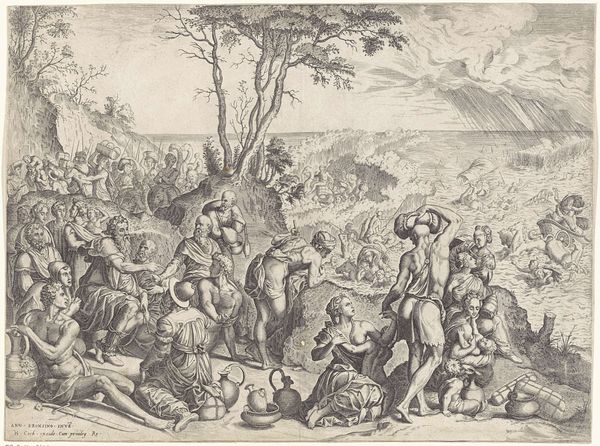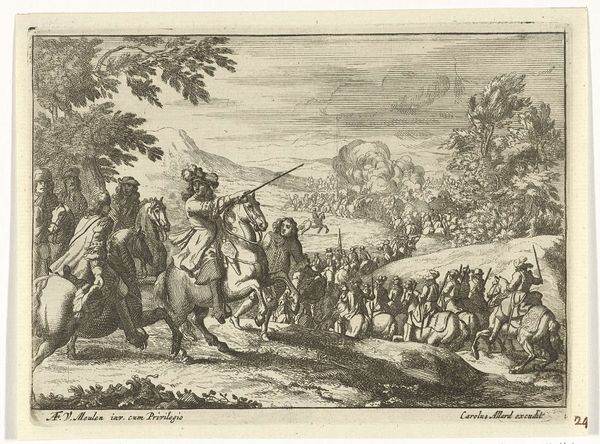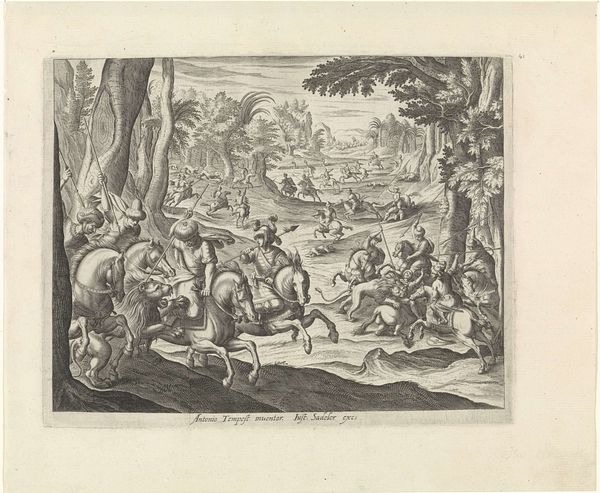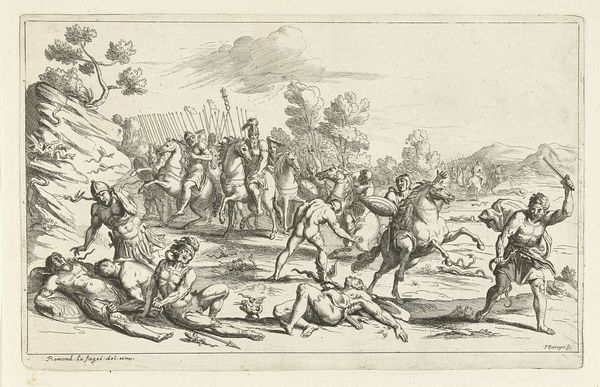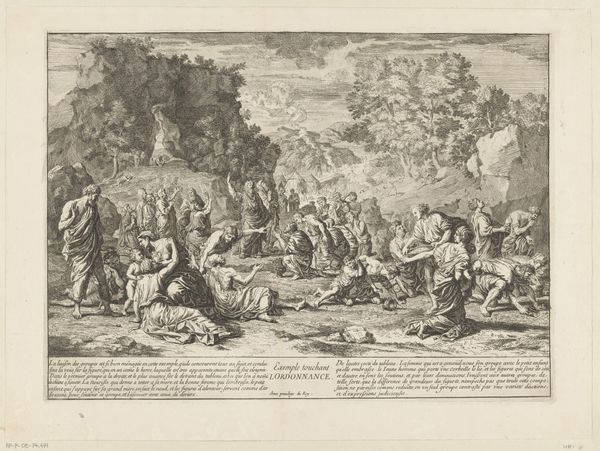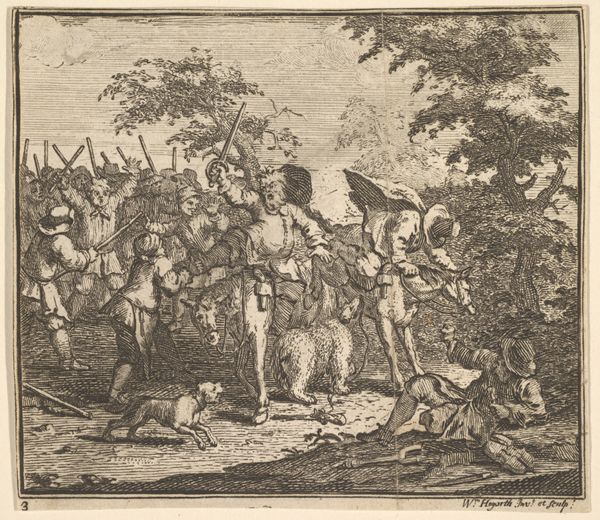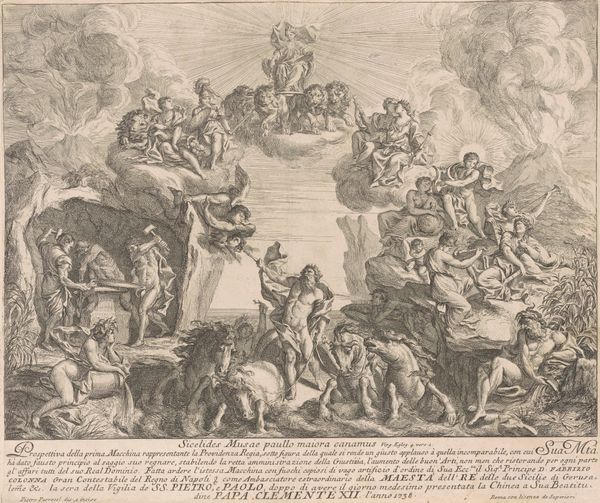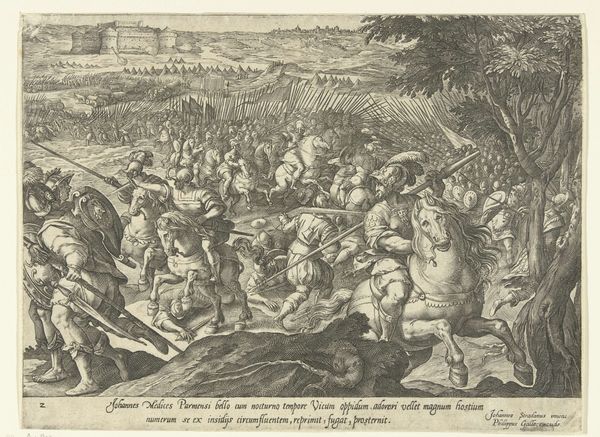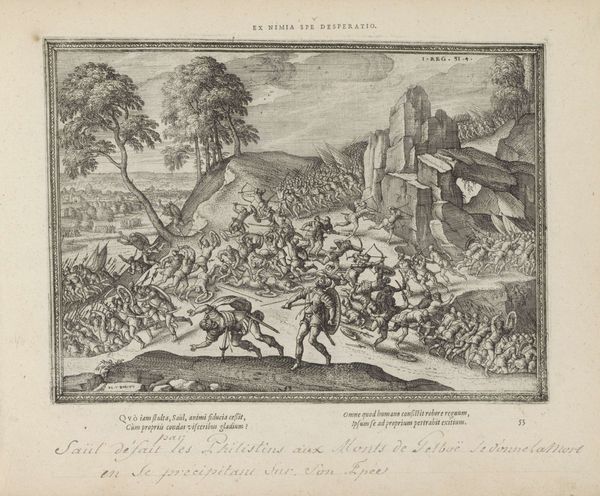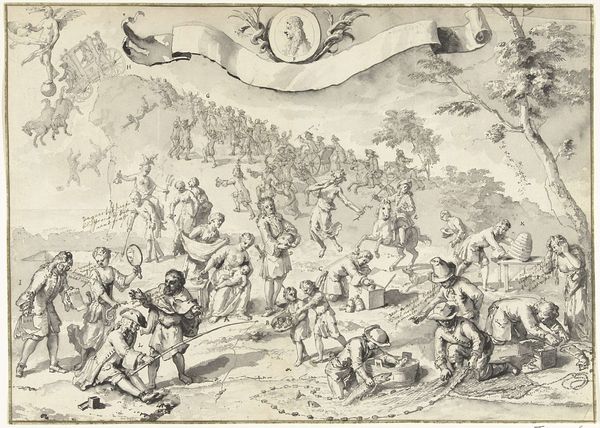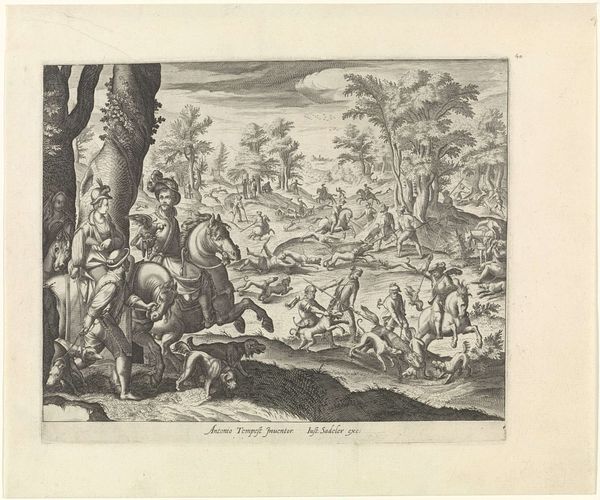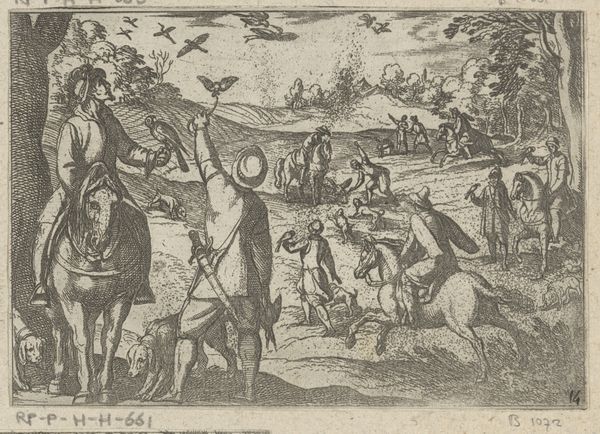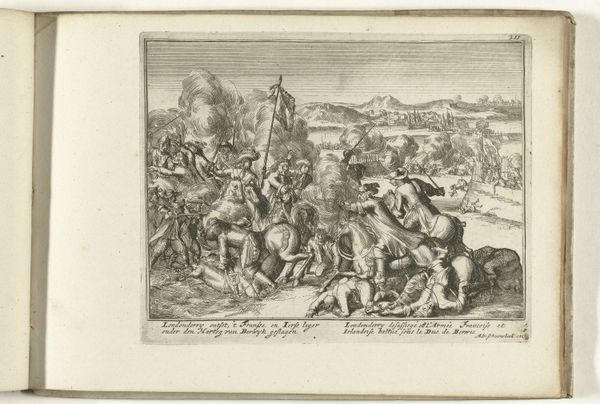
print, engraving
#
narrative-art
#
baroque
# print
#
history-painting
#
engraving
Dimensions: height 220 mm, width 260 mm
Copyright: Rijks Museum: Open Domain
Curator: Let’s discuss "Wonderbare spijziging," or "Miraculous Feeding," a baroque engraving by Richard van Orley, created before 1700. The piece depicts the feeding of the 5000. Editor: My immediate reaction is one of controlled chaos. Despite being an engraving, the artist managed to convey a sense of movement through the dense clustering of figures, contrasted by open space at the very top, around the foliage. Curator: Yes, note the dynamic arrangement and use of line. Orley effectively creates depth by varying the density of the etched lines. The figures in the foreground, rendered with sharper detail, ground the scene and recede gradually toward a loosely defined crowd on the left background, almost fading into nothing. Editor: Beyond the skillful technique, what resonates is the enduring image of generosity and faith that permeates the scene. The act of sharing is portrayed as a visual metaphor for communal unity. Look at how people turn to one another, creating almost an intimate moment within a mass. There's a cultural memory at play here, the significance of sustenance transcending pure survival, speaking also to shared values. Curator: Agreed. Structurally, we see a careful orchestration of foreground, middle ground, and background. Figures lead our eyes toward what appears to be Christ multiplying the loaves and fishes, placed centrally but slightly offset. Orley creates focus not just through placement but also contrasts in shading and clarity. Editor: Consider how he frames the whole event. We see an expanse of figures whose expressions range from amazement to relief; some clasping their hands as in a prayer, as the central gesture of Christ blesses the food, underscoring the miracle as a form of both material and spiritual nourishment. Even in this single, frozen frame of an engraving we find that echo through Christian imagery of a narrative rich in history. Curator: Ultimately, "Wonderbare spijziging" is compelling due to its effective compositional strategies within the strict formal constraints of engraving and the overall Baroque aesthetics. Editor: And for its power to encapsulate communal experience of abundance in times of scarcity, reflecting cultural symbols and the timeless act of offering that continue to hold relevance today.
Comments
No comments
Be the first to comment and join the conversation on the ultimate creative platform.
